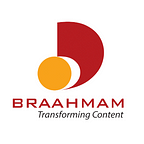Video Translation Strategies for Achieving International Business Success
Understanding the Impact of Video Translation
Research shows that localized content improves customer engagement and conversion rates significantly. For instance, a study by CSA Research found that 75% of consumers prefer to buy products in their native language. This preference extends to video content, where viewers are more likely to engage with videos that are presented in their native tongue.
1. Conduct Market Research:
- Identify Key Markets: Analyze where your product or service has potential demand.
- Cultural Preferences: Understand the cultural nuances, viewing habits and preferences of your target audience.
2. Language Preferences:
- Primary Languages: Determine the primary languages spoken by your target audience.
- Dialects and Variations: Consider regional dialects and variations to enhance relatability.
Choosing the Right Video Translation Approach
When it comes to video translation, businesses have several approaches to consider:
- Human vs. Machine Translation: Human translation ensures accuracy and cultural relevance but can be time-consuming. Machine translation offers speed but may lack nuance.
- Voice-over vs. Subtitles: Voice-over allows you to maintain the style and delivery of the original audio, while subtitles or captions cater to viewers who prefer reading along. The choice depends on audience preferences and content type.
Effective Strategies for Translating Videos to Achieve Global Business Success
- Best Cultural Adaptation: Understand and adapt videos to the cultural norms, preferences and sensitivities of target markets. This includes language nuances, humor and symbolism that may vary across regions.
- Accurate Translation: Ensure precise translation of dialogue, subtitles and on-screen text to maintain the original message’s integrity. Transcriptions of the original audio need to be accurately produced by native speakers, and annotated to provide context for the translators. These translators need to be professional native speakers of the target language to avoid misunderstandings.
- Localization: Go beyond translation by localizing content to resonate with specific audiences. This may involve adjusting visuals, voiceovers and even storylines to better fit local customs, holidays, or societal norms.
- SEO Optimization: Optimize video titles, descriptions and tags with relevant keywords in the target language to improve search engine visibility. This helps attract organic traffic from international audiences searching for related content.
- Multi-Platform Distribution: Tailor video formats and lengths to suit different platforms popular in target markets (e.g., YouTube, TikTok, WeChat). Customize thumbnails and captions to maximize engagement across diverse audiences.
- Compliance with Regulations: Adhere to local regulations regarding video content, copyright and privacy laws. This ensures legal compliance and avoids penalties or bans that could hinder international expansion efforts.
Technical Considerations for Video Translation
Technical preparation is crucial for seamless video translation:
- File Compatibility: Ensure video files are in compatible formats like MP4, AVI, MOV or WMV for seamless translation tool integration.
- Subtitle Format: Use standard subtitle formats such as SRT (SubRip Subtitle), VTT (WebVTT), or TTML (Timed Text Markup Language) to ensure compatibility across platforms.
- Timing and Sync: Maintain precise synchronization between audio/video and subtitles to avoid discrepancies that can affect viewer comprehension.
- Character Limit: Keep subtitles concise with around 35–40 characters per line and 2 lines per subtitle frame to fit comfortably on screen.
- Localization: Adapt translations culturally and linguistically to resonate with target audiences, considering idiomatic expressions and regional preferences.
- Quality Assurance: Conduct thorough QA checks to ensure accurate translation, proper synchronization and overall quality of the translated video content.
Case Studies of Successful Brands in Video Translation:
Numerous brands have excelled in international markets through effective video translation:
- Nike: Tailors promotional videos to reflect regional sports and cultural icons, resonating deeply with local audiences.
- Netflix: Offers subtitles and dubbing in multiple languages, enhancing accessibility and viewer engagement worldwide.
- Coca-Cola: Uses localized storytelling in video campaigns to connect emotionally with diverse global audiences.
Taking the Next Steps
Mastering video translation is key to international business success. By tailoring content to cultural nuances, selecting the right translation methods, utilizing technology and ensuring top-notch quality control, your videos can effectively engage global audiences. Start implementing these strategies today to expand your reach and connect with new markets worldwide. And a great place to start is to talk to an experienced video localization agency like Braahmam International.
